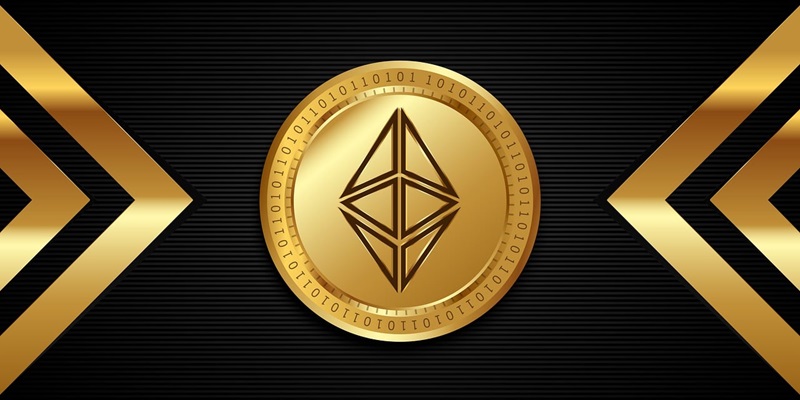Ethereum, one of the foremost blockchain platforms, faces a significant challenge in scaling to meet growing demands. This issue has been the subject of extensive research and development. In a recent proposal, Ethereum researcher Justin Drake and co-founder Joseph Lubin have put forth a novel approach to address these scalability concerns. Their proposal outlines a roadmap that revisits sharding and incorporates a native zero-knowledge Ethereum Virtual Machine (zkEVM) at layer 1, aiming to significantly boost Ethereum’s transaction throughput and efficiency.
The Need for Scalability
Reconsidering Sharding for Increased Throughput
Sharding, a technique that was previously deemed unfeasible for Ethereum, could now be within reach due to advances in zero-knowledge technologies. This method involves breaking the blockchain into smaller pieces, or "shards," which can process transactions in parallel. By doing so, sharding has the potential to greatly enhance the network’s capacity to handle numerous transactions simultaneously. The proposal suggests that each shard would be identical and executed by the zkEVM, which optimizes computations and increases overall performance.
Justin Drake and Joseph Lubin believe that leveraging zkEVM with sharding will address the limitations faced by Ethereum’s current infrastructure. The integration of zero-knowledge proofs allows for multiple shards to function concurrently without sacrificing security. These advancements provide an opportunity to revisit and implement sharding in a manner that was not possible before. If successful, this approach could lead to a substantial increase in transactions per second and eliminate the current gas limit, allowing builders to create larger blocks and more complex applications.
Optimizing Consensus Mechanisms
Drake’s recent post from November 11 highlights the contemplation of a complete redesign of Ethereum’s consensus layer to accommodate this ambitious roadmap. By rethinking how consensus is achieved, the team aims to create a more efficient system that can integrate the zkEVM and support sharding. Such a redesign would involve significant changes to the underlying architecture of Ethereum, ultimately providing a more scalable and robust platform.
The proposed changes to Ethereum’s consensus mechanisms are not without challenges. However, with Lubin’s support and a focus on optimizing computational approaches, the feasibility of this vision is increasingly likely. Recent developments in zero-knowledge strategies have broadened the scope of what is achievable, allowing for significant improvements in block times and transactional throughput. These enhancements could make block times as short as one second, enabling exponentially higher transaction processing capabilities.
The Concept of Ethereum 3.0
Speculation and Expectations
The concept of Ethereum 3.0 has generated considerable excitement and speculation within the blockchain community. This next evolutionary stage of Ethereum promises to bring unparalleled scalability and efficiency through the combination of a native zkEVM and sharding. Doug Colkitt, founder of Ambient Finance, has fueled this anticipation by sharing a rumor about a “second merge” into a new consensus with one-second block times, effectively transforming the network’s operational dynamics.
Should Ethereum 3.0 materialize as envisioned, it could represent a pivotal milestone for the blockchain platform. The anticipated merge could result in the removal of the gas limit, with bandwidth becoming the primary constraint on scaling. Such a development would dramatically enhance the platform’s capacity, allowing for smoother and more efficient transaction processing. As a result, users and developers alike are eagerly awaiting further details and potential implementation timelines for these innovations.
Market Reactions and Future Prospects
Ethereum has recently experienced a significant boost in market value, partly due to these exciting prospects and political developments. Following these events, Ethereum’s value saw a remarkable 38% increase. With its price climbing past $3,400 and potentially on track to surpass the $4,000 mark, investor interest in Ethereum remains strong. The market’s positive response indicates confidence in the platform’s future and its ability to overcome current scalability challenges.
The prevailing market sentiment reflects optimism about Ethereum’s potential to redefine its transactional capabilities. As developers continue to work on implementing the proposal’s key elements, the community is closely monitoring progress and awaiting further updates. The successful execution of these strategies could solidify Ethereum’s position as a premier blockchain platform, capable of supporting a wide array of decentralized applications with greater efficiency and speed.
Conclusion
Ethereum, a leading blockchain platform, grapples with the challenge of scaling to accommodate its growing demands. This issue has garnered extensive attention and has been the focus of substantial research and development efforts. Recently, Ethereum researcher Justin Drake and co-founder Joseph Lubin have introduced an innovative proposal addressing these scalability concerns. Their plan presents a detailed roadmap revisiting sharding, which is a method of partitioning the blockchain to improve transaction processing. Additionally, they propose incorporating a native zero-knowledge Ethereum Virtual Machine (zkEVM) at layer 1. This zkEVM is designed to significantly enhance Ethereum’s transaction throughput and overall efficiency by enabling the execution of complex smart contracts with privacy and security. The inclusion of zkEVM aims to provide a more scalable solution, ensuring Ethereum can handle a higher volume of transactions while maintaining its core functionality and security. This proposal represents a significant advancement in addressing Ethereum’s scalability issues and setting a path for future growth and development within the blockchain ecosystem.

